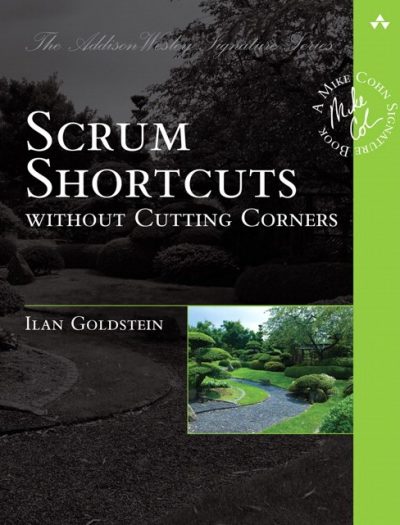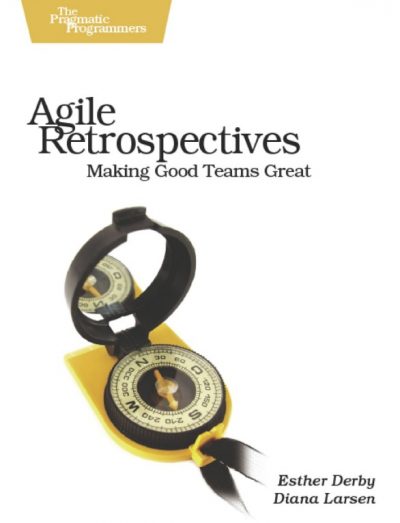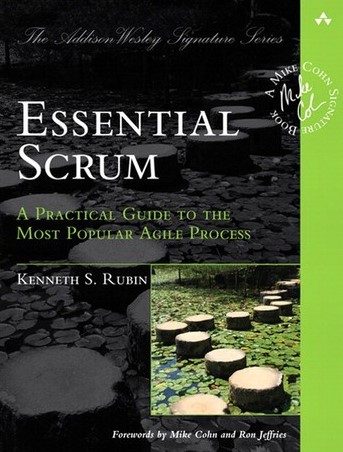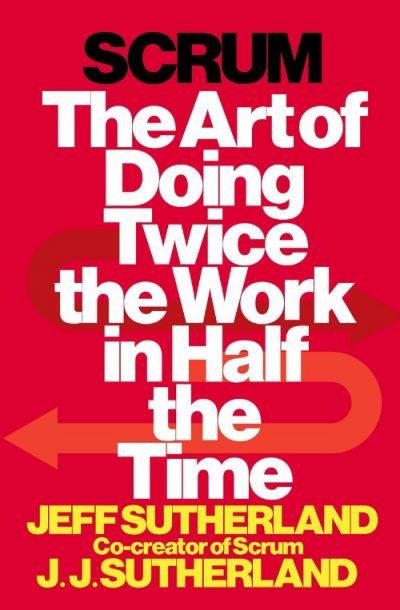Scrum allows Agile teams working on complex projects and delivering winning products by solving problems adaptively. This popular straightforward method is widely used to handle projects and get things done. Scrum projects more accurately fulfill customers' needs because they encourage continuous feedback.
There is no need for detailed analytics to understand that Scrum continues to grow in popularity just because of its many benefits and general effectiveness. And the important merit in this belongs to a Scrum Master. In this post, we extol and praise the role of a Scrum Master, without which no Scrum project succeeds.

A Scrum Master is a role, but this is not a fun character in a role-playing game. This is a serious and responsible job, based on leadership and collective trust.
Scrum Masters (SM) are responsible for ensuring real Scrum processes over the project course. They facilitate these processes for the company and the entire Scrum team.
So, what is the stellar path to the SM career? What characteristics should a beginner have? And what useful sources to study? Let's figure it out.
A Scrum Master is responsible for managing the process. SMs guide their teams through the Scrum process with their experience and expertise but they are not involved in the decision-making.
Often, not everyone in the team has the same understanding of the Scrum concept. Especially it is true for teams that are new to the methodology.
There are many chances that the project will fail without a Scrum Master who promotes and supports the process. He/she is a real helper for team members to understand the value, rules, and practices of Scrum.
Scrum Masters act as servant leaders and do not belong to any hierarchy. They use a holistic approach to work and offer service to others, promoting a sense of community and decision-making.
Successful Scrum Masters as the best teachers should demonstrate people in the team how things can be done better.
Actually, the SM has several roles in the project:
Today, if you are looking for relevant comments from practicing Scrum masters, you do not obviously need to arrange face-to-face interviews. There are many open sources, such as Quora, where you can quickly find the opinions and comments of experts.
Here's how some ScrumMasters and Agile-practitioners evaluate the main advantages and strengths of the Scrum Masters' role in one of the Quora posts:
Guy Maslen, who manages risks through Agile approaches among the essential qualities of an effective Scrum Master highlights the positive outlook, ability to build high-performance teams and generative performance culture, good communication, ability to create a psychologically safe and organization culture, high level of coaching skills, and business knowledge around risks, finance, HR and other practices.
Chuck Cobb, the Agile project management instructor, and author outlines the following characteristics: excellent skills to build cohesive and high-performance teams, deep understanding of Agile and Scrum, servant leadership skills to facilitate empowered teams, a strong sense of values combined with flexibility, as well as tech competence to be able to speak the same language as developers.
SM is not involved in planning the release and Scrum team is a rather self-organizing structure. So is this role crucial at all?
Let's say, a ScrumMaster is a bridge that holds the project together by facilitating and acting in the daily standup meetings. He/she maintains the Burndown chart and runs retrospectives, sprint planning, and reviews.
A Scrum Master always performs as a coach and helps team members to be organized and work cross-functionally.
It's not an easy thing to make the team create a high-value product by removing obstacles and coaching them through events and ceremonies, however, ScrumMasters try their best to do it perfectly.
The obstacles that slow the team down from getting their work done may include unnecessary approvals, slow responsiveness from other departments, or even updating outdated systems.
All representatives of the Scrum team should focus on the current work to accomplish and get it done as efficiently as possible.
The most proven and effective way to become a Scrum Master is certification. You may try the classic mean — the Certified ScrumMaster program by the Scrum Alliance that teaches candidates how to get Scrum teams to work at their highest levels.
The Scrum Master certification will be definitely useful in learning Scrum fundamentals and becoming intimate with what the team roles are, what Scrum ceremonies are, what rules and artifacts are in Scrum and so on. This document will help you to expand your career across many industries.
The most effective way is to learn Scrum from those who created and maintain it. The Professional Scrum Master course teaches how to use Scrum to optimize value, productivity and the total cost of product ownership. The course lasts 2 days and provides students with the tools to work with people and teams, relate to behavioral shifts, coach and facilitate techniques.
One more advanced Scrum Master course is The Professional Scrum Master II (PSM II) that lasts 2 days support experienced Scrum Masters in their professional paths. The course contains the set of instructions and exercises looking at the challenges that Scrum Masters face.
Take time to study, read and communicate a lot with practicing certified Scrum Masters and Agile coaches and you will certainly succeed!
by Mitch Lacey
This well-written book is focused mostly on real practical advice and less on theory. The author shares useful tips from years of experience, giving loads of recommendations based on real-world situations and learning.
The book covers a wide range of topics and it's very easy to read. Every chapter starts with a story which illustrates what kinds of problems you might have if you approach Scrum without experience.
The Field Guide also covers related business skills such as how to approach and manage contracts. It will provide you with the required skills and confidence to adopt Scrum more rapidly, successfully, and without pain and fear.

by Jeff Sutherland
If you are interested in the historical background of Scrum and some deep facts about the method, this book is for you. The book is basically for specialists who already studies and practices Agile Methodology for a long time.
It seems like the mandatory reading for any leader, and it addresses Scrum from a management standpoint and shows its value.
Moreover, this book may help you to achieve what others consider unachievable – whether it be inventing an innovative technology or building a foundation for your family.

by Ilan Goldstein
Most books about Scrum are on theory and describe facts from a distant third-person perspective. The author of this masterpiece has created the opposite. This book is like a vivid conversation. Scrum Shortcuts Without Cutting Corners is an outstanding reference for anyone who works with Scrum to build their software solutions.
Goldstein draws on his extensive Agile experience and presents thirty proven shortcuts for optimizing Scrum processes and outcomes. Do not hesitate to keep this useful book in your cubicle as a reference.

by Esther Derby, Diana Larsen, and Ken Schwaber
If you want to improve your ability to run retrospectives, this is a right choice.
Project retrospectives are aimed to help teams examine what went right and what went wrong on their project.
Usually, retrospectives are only helpful at the end of the project and it can be too late to help. It worth to add Agile retrospectives that are iterative and incremental. The authors of this book share helpful tools, tricks, and tips you need to fix the problems that you face on a software development project.
You'll learn how to solve problems and implement solutions effectively throughout the project.

by Kenneth S. Rubin
If Scrum is your religion and you are trying to apply it to develop innovative products and services that delight your customers, Essential Scrum is the complete reference you’ve been searching for.
The author is a successful Scrum coach and trainer who illuminates the values and practices of Scrum and shares with readers flexible and proven approaches to succeed.
The book provides easy-to-digest descriptions with nice illustrations for describing Scrum’s roles, artifacts, and all activities.
Reading this book, you will definitely get back to the basics and focus on what’s really important.

There is no need for detailed analytics to understand that Scrum continues to grow in popularity just because of its many benefits and general effectiveness. And the important merit in this belongs to a Scrum Master. In this post, we extol and praise the role of a Scrum Master, without which no Scrum project succeeds.

A Scrum Master is a role, but this is not a fun character in a role-playing game. This is a serious and responsible job, based on leadership and collective trust.
Scrum Masters (SM) are responsible for ensuring real Scrum processes over the project course. They facilitate these processes for the company and the entire Scrum team.
So, what is the stellar path to the SM career? What characteristics should a beginner have? And what useful sources to study? Let's figure it out.
The basics of a Scrum Master's role
A Scrum Master is responsible for managing the process. SMs guide their teams through the Scrum process with their experience and expertise but they are not involved in the decision-making.
Often, not everyone in the team has the same understanding of the Scrum concept. Especially it is true for teams that are new to the methodology.
There are many chances that the project will fail without a Scrum Master who promotes and supports the process. He/she is a real helper for team members to understand the value, rules, and practices of Scrum.
Scrum Masters act as servant leaders and do not belong to any hierarchy. They use a holistic approach to work and offer service to others, promoting a sense of community and decision-making.
Successful Scrum Masters as the best teachers should demonstrate people in the team how things can be done better.
What is the real strength of a Scrum Master’s role?
Actually, the SM has several roles in the project:
- Assists the product owner by making sure that the goals and scope are clear to everyone.
- Provides relevant solutions and project management software to manage the product backlog effectively.
- Knows product planning in an empirical environment and knows exactly how to be agile and practice agility.
- Studies Agile approaching and can set up Scrum meetings to direct or pass on information about all processes.
- Constantly dispenses relevant info to stakeholders about where the current sprint stands.
Today, if you are looking for relevant comments from practicing Scrum masters, you do not obviously need to arrange face-to-face interviews. There are many open sources, such as Quora, where you can quickly find the opinions and comments of experts.
Here's how some ScrumMasters and Agile-practitioners evaluate the main advantages and strengths of the Scrum Masters' role in one of the Quora posts:
Guy Maslen, who manages risks through Agile approaches among the essential qualities of an effective Scrum Master highlights the positive outlook, ability to build high-performance teams and generative performance culture, good communication, ability to create a psychologically safe and organization culture, high level of coaching skills, and business knowledge around risks, finance, HR and other practices.
Chuck Cobb, the Agile project management instructor, and author outlines the following characteristics: excellent skills to build cohesive and high-performance teams, deep understanding of Agile and Scrum, servant leadership skills to facilitate empowered teams, a strong sense of values combined with flexibility, as well as tech competence to be able to speak the same language as developers.
What do Scrum Masters actually do?
SM is not involved in planning the release and Scrum team is a rather self-organizing structure. So is this role crucial at all?
Let's say, a ScrumMaster is a bridge that holds the project together by facilitating and acting in the daily standup meetings. He/she maintains the Burndown chart and runs retrospectives, sprint planning, and reviews.
The leader of the Scrum team
A Scrum Master always performs as a coach and helps team members to be organized and work cross-functionally.
It's not an easy thing to make the team create a high-value product by removing obstacles and coaching them through events and ceremonies, however, ScrumMasters try their best to do it perfectly.
The obstacles that slow the team down from getting their work done may include unnecessary approvals, slow responsiveness from other departments, or even updating outdated systems.
All representatives of the Scrum team should focus on the current work to accomplish and get it done as efficiently as possible.
How to become a Scrum Master?
The most proven and effective way to become a Scrum Master is certification. You may try the classic mean — the Certified ScrumMaster program by the Scrum Alliance that teaches candidates how to get Scrum teams to work at their highest levels.
The Scrum Master certification will be definitely useful in learning Scrum fundamentals and becoming intimate with what the team roles are, what Scrum ceremonies are, what rules and artifacts are in Scrum and so on. This document will help you to expand your career across many industries.
Scrum Master Trainings
The most effective way is to learn Scrum from those who created and maintain it. The Professional Scrum Master course teaches how to use Scrum to optimize value, productivity and the total cost of product ownership. The course lasts 2 days and provides students with the tools to work with people and teams, relate to behavioral shifts, coach and facilitate techniques.
One more advanced Scrum Master course is The Professional Scrum Master II (PSM II) that lasts 2 days support experienced Scrum Masters in their professional paths. The course contains the set of instructions and exercises looking at the challenges that Scrum Masters face.
Take time to study, read and communicate a lot with practicing certified Scrum Masters and Agile coaches and you will certainly succeed!
As a bonus: TOP-5 Books for Scrum Masters
The Scrum Field Guide: Practical Advice For Your First Year
by Mitch Lacey
This well-written book is focused mostly on real practical advice and less on theory. The author shares useful tips from years of experience, giving loads of recommendations based on real-world situations and learning.
The book covers a wide range of topics and it's very easy to read. Every chapter starts with a story which illustrates what kinds of problems you might have if you approach Scrum without experience.
The Field Guide also covers related business skills such as how to approach and manage contracts. It will provide you with the required skills and confidence to adopt Scrum more rapidly, successfully, and without pain and fear.

Scrum: The Art Of Doing Twice The Work In Half The Time
by Jeff Sutherland
If you are interested in the historical background of Scrum and some deep facts about the method, this book is for you. The book is basically for specialists who already studies and practices Agile Methodology for a long time.
It seems like the mandatory reading for any leader, and it addresses Scrum from a management standpoint and shows its value.
Moreover, this book may help you to achieve what others consider unachievable – whether it be inventing an innovative technology or building a foundation for your family.

Scrum Shortcuts Without Cutting Corners: Agile Tactics, Tools & Tips
by Ilan Goldstein
Most books about Scrum are on theory and describe facts from a distant third-person perspective. The author of this masterpiece has created the opposite. This book is like a vivid conversation. Scrum Shortcuts Without Cutting Corners is an outstanding reference for anyone who works with Scrum to build their software solutions.
Goldstein draws on his extensive Agile experience and presents thirty proven shortcuts for optimizing Scrum processes and outcomes. Do not hesitate to keep this useful book in your cubicle as a reference.

Agile Retrospectives: Making Good Teams Great
by Esther Derby, Diana Larsen, and Ken Schwaber
If you want to improve your ability to run retrospectives, this is a right choice.
Project retrospectives are aimed to help teams examine what went right and what went wrong on their project.
Usually, retrospectives are only helpful at the end of the project and it can be too late to help. It worth to add Agile retrospectives that are iterative and incremental. The authors of this book share helpful tools, tricks, and tips you need to fix the problems that you face on a software development project.
You'll learn how to solve problems and implement solutions effectively throughout the project.

Essential Scrum: A Practical Guide To The Most Popular Agile Process
by Kenneth S. Rubin
If Scrum is your religion and you are trying to apply it to develop innovative products and services that delight your customers, Essential Scrum is the complete reference you’ve been searching for.
The author is a successful Scrum coach and trainer who illuminates the values and practices of Scrum and shares with readers flexible and proven approaches to succeed.
The book provides easy-to-digest descriptions with nice illustrations for describing Scrum’s roles, artifacts, and all activities.
Reading this book, you will definitely get back to the basics and focus on what’s really important.
